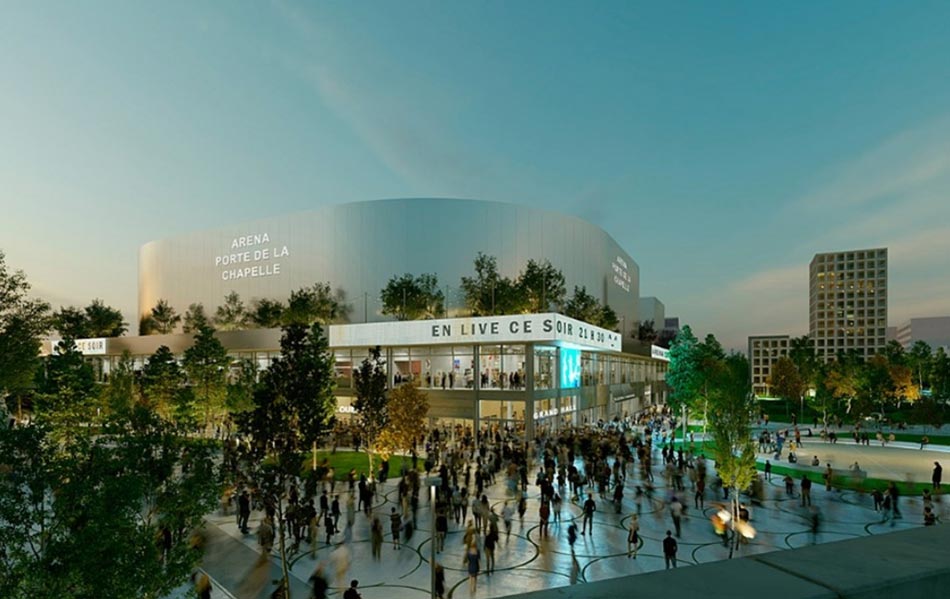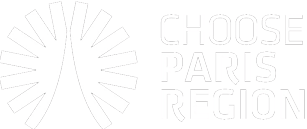
The 2024 Olympic and Paralympic games are a tremendous accelerator for regional development in Greater Paris. The Olympic’s legacy will go beyond great sporting achievements as the 2024 games have inspired a new way of designing, constructing and living in cities; a way that is more restrained, resilient and inclusive.
From the very outset, Paris’s candidature to hold the Olympic and Paralympic games in 2024 called out its ambition of establishing a standard of excellence for carbon-neutral international events. The Paris games would embody new ways of living, travelling, consuming and existing together as a community. The city would foster better health and well-being through lighter more sustainable constructions.
In the north of Paris, the transformational power of the Olympics can already be seen: Porte-de-la-Chapelle Arena, is a new timber-framed multi-purpose venue that has been built with bio-based recyclable materials. Located in the heart of the future development zone, Mines-Fillettes Station, in a district that until now has been marked by urban divisions, the Arena will endure as an 8,000-seat cultural and sporting venue for the community, intended for and open to all the inhabitants of this rapidly changing mixed neighbourhood.

An ecological metamorphosis
In Colombes, west of Paris, the iconic Yves-du-Manoir Stadium – where the 1924 games were held – will host field hockey in a fully renovated site that is designed to obtain the E3C1 environmental label by meeting exemplary carbon targets for both its infrastructure and operations. The future eco-district based on Ile Saint-Denis, Northern Paris, will host the athletes' village, which will also extend to the neighboring cities of Saint-Denis and Saint-Ouen-sur-Seine. The construction of a bridge for bicycles, buses and pedestrians will profoundly change the area, which until now has been relatively isolated by major roads. The environmental objectives are ambitious. For example, the construction uses renewable, recyclable, and organically sourced products, and materials are sourced locally then transported by river. The banks of the Seine are being reclaimed and the daily life of inhabitants will be transformed by the development of a 1.5-hectare park, new housing, shops, services, a nautical centre, the Urban Arts centre and finally an innovative mobility centre project.
The entire metropolitan area of Paris Region is committed to the games. On the Champs Elysées, the Grand Palais will be restored to its iron and glass architectural glory. Completely renovated, its nave will host the fencing and taekwondo events. Nearby, its twin, the Grand Palais Ephemère, is a re-usable temporary structure, made of wood, that will be the venue for judo and wrestling events.
Boosting innovation and opportunities
To the southwest of Paris, in an exceptional natural setting with the national golf course and Elancourt Hill, the city of Saint-Quentin-en-Yvelines will host 6 Olympic events, including one Paralympic. Once again, the Games have fostered innovation as the national velodrome, equipped with a 5G network, will offer virtual reality and immersive interactions that are revolutionizing sporting events.
And if other examples of innovation were needed, the first flying taxis are now in an experimental stage. In 2024, they should be operational and link Charles-de-Gaulle airport to the Olympic sites. These prototypes, supported by Paris Region, Paris Aéroport and RATP, will make Paris Region a world leader in urban air mobility.
Sustainable development, low-carbon construction, new forms of mobility, and an environment conducive to good living and personal well-being are all reasons to invest in Paris Region. Investors now can take advantage of the remaining opportunities without waiting for the 2024 Olympic Games.

